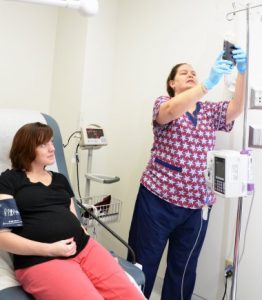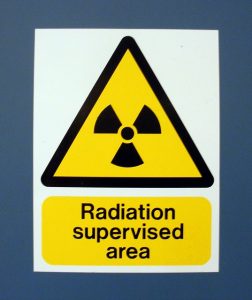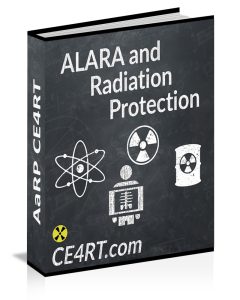Healthcare Worker Classification and Areas of Work

For the purpose of radiation safety, healthcare worker classification is divided into two categories – those who directly work with radiation and those who do not directly work with radiation but may be exposed to it. Occupational dose limits apply to workers who directly perform radiation work. Hospital employees who do not directly perform radiation work are treated like members of the general public in terms of restricting exposure.
Most radiation exposures can be predicted, i.e., the radiation exposure is expected and can be limited with appropriate safety measures. The majority of medical exposures fall into this category. On the contrary, accidental radiation exposures under abnormal conditions cannot be predicted and require urgent measures to prevent injuries and save lives.
The Pregnant Radiologic Technologist: Rules and Regulations
An important aspect of healthcare worker classification is that special care needs to be taken for female employees who are involved in radiation work and have a possible or confirmed pregnancy. It is noteworthy that the IAEA discourages discrimination of technologists based on pregnancy status. The recommendation is to allow expectant mothers to continue working as long as it can be ensured that the fetus is not exposed to doses exceeding the safe limit. However, the employer cannot make it mandatory for a pregnant woman to work in a radiation environment and this must be done of the individual’s own volition.
Following the declaration of a confirmed pregnancy, the employer is obligated to carefully evaluate the pregnant technologist’s work environment and identify any possible risks. In addition, the pregnant worker must receive information about the potential risks of radiation exposure, dose limits, and hospital and state policies. Finally, measures that can provide extra protection to the developing baby should be reviewed with the expectant mother.
Dose Monitoring for Pregnant Workers
It is a good idea for a pregnant technologist to undergo fetal dose monitoring in order to keep a tab on the baby’s exposure. A dosimeter should be worn by the expectant mother at waist level under the lead apron, preferably one which measures the dose in real-time and sounds an alarm if the exposure exceeds safe limits. This allows the technologist to adjust her position, use additional layers of protection, or take other steps to immediately reduce exposure. In addition to healthcare worker classification, areas in the healthcare facility are also classified according to radiation risk.
Controlled, Supervised, and Uncontrolled Areas in Healthcare Facilities
The radiation protection officer classifies all areas in a healthcare facility as controlled, supervised, or uncontrolled. This is important in implementing radiation safety. Controlled areas are parts of the facility where workers are likely to be exposed to radiation. This means that such areas require specific safety measures and modifications as well as monitoring of working conditions for radiation protection. Controlled areas in imaging departments are the areas where radiation-producing devices are installed. Adjacent areas such as control booths and procedure/treatment rooms are also controlled areas. The boundaries of a controlled area depend on operational logistics and the existing structure of the building. Access to a controlled area is restricted to authorized workers as defined by the healthcare worker classification.
A controlled area is a physically segregated area, i.e., a line drawn on the floor is not enough. The physical demarcation is clearly displayed and non-radiation workers are restricted from entering the controlled area. Radiologists, radiologic technologists, radiation therapists, radiation oncologists, medical physicists, and dosimetrists are authorized to enter controlled areas but must undergo some form of personal dose monitoring and use protective equipment. Also within controlled areas there are certain sections with high radiation levels where workers must limit the amount of time spent or use personal protective devices to comply with dose limits. Controlled areas are especially important during a radiologic crisis.
Safety Measures in Restricted Areas
Restricted access areas are defined by warning signs at the entrance with the radiation symbol indicating the presence of ionizing radiation. Exposure risk in a controlled area must be indicated in a way that can be easily understood by everyone. Entry to the area is according to healthcare worker classification. Controlled areas are subject to regular radiation surveillance. Safety procedures and instructions to limit radiation risk are made available in the controlled area and updated from time to time. All sources of radiation are clearly indicated with appropriate signs. Radiation-measuring devices are routinely calibrated and maintained. Qualified experts check filters, interlocks, and other safety features in controlled areas. The safety of the controlled area is overseen by the radiation safety officer.

In addition to controlled areas, medical facilities have supervised areas where occupational exposure to radiation is closely monitored, even though specific safety measures are not needed. Supervised areas do not require physical boundaries, but they are clearly demarcated. In terms of healthcare worker classification, non-radiation workers have managed access to these areas. Protective equipment and personal monitoring may or may not be required in supervised areas.
Uncontrolled (non-designated) areas are the general areas of the hospital where patients, visitors, and non-radiation workers are allowed unrestricted access. However, appropriate precautions and indication of radiation risk is still required in non-designated areas. It should be noted that the classification of workers and classification of controlled areas is not exactly parallel.
Continuing Education for X-ray Technologists
We offer a range of online courses for X-ray CE. All our courses are category A credits for ARRT® and other registries. Read our FAQs if you have any questions about system requirements, technical help, or our courses.
Get more information about free x ray ce credits
